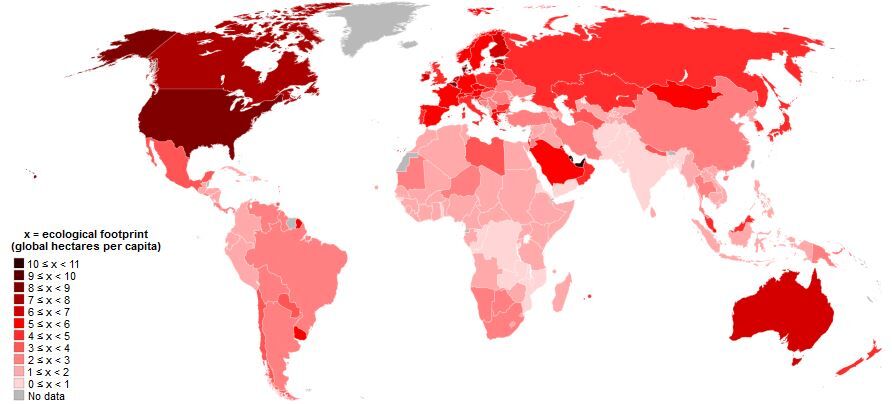The ecological footprint is an estimate of the land and aquatic area required by an individual to support their lifestyle, meaning that they have all the resources to meet their needs and to ensure the disposal of their waste.
Since the 18th century, technology has rapidly evolved, leading to greater consumption of certain resources, but also to a significant increase in the amount of waste released into the environment. This means human activity is a source of significant disturbances in the environment.
The concept of the ecological footprint was developed by scientists to better understand the impact of human consumption on the environment. It is the total area required to support our way of life, including the space occupied by humans, the agricultural, forest and ocean expanses used to produce resources and the areas where waste is disposed, including areas required to absorb carbon dioxide from fossil fuel combustion.
The ecological footprint of a population can be calculated using the formula below.

irrelevant for the english version
To make calculating the ecological footprint and understanding the data easier, the ecological footprint is usually expressed in hectares per person (ha/person). One hectare represents an area of |10\ 000\ \text{m}^2.|
The biological capacity of the Earth refers to all the productive areas of the planet that can be exploited by humans.
The total area of these surfaces (cultivated fields, pastures, forests, fisheries, built-up areas) is estimated at about 12 billion hectares. There is a vast exploitable area. The world population is approximately 7.4 billion, so the biological capacity is 1.6 ha/person. In other words, there are 1.6 hectares of productive land for every human being on the planet.
In industrialized countries, the ecological footprint greatly exceeds the biological capacity. The world map below shows the ecological footprint of each country. The darker the colour, the greater the ecological footprint. However, when this ecological footprint is compared to the biological capacity, the industrialized countries have an ecological footprint that greatly exceeds the biological capacity. In other words, the inhabitants of these countries consume more than what they could obtain by exploiting their territory.
When the ecological footprint exceeds the biological capacity, the rate of consumption cannot be maintained for much longer. Eventually, the biosphere’s resources could be depleted.
